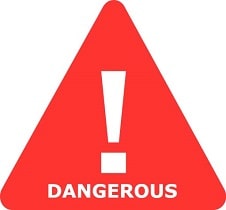Is Etoposide Safe in Breastfeeding
Question
I am a breastfeeding mother and i want to know if it is safe to use Etoposide? Is Etoposide safe for nursing mother and child? Does Etoposide extracts into breast milk? Does Etoposide has any long term or short term side effects on infants? Can Etoposide influence milk supply or can Etoposide decrease milk supply in lactating mothers?
Etoposide lactation summary

- DrLact safety Score for Etoposide is 7 out of 8 which is considered Dangerous as per our analyses.
- A safety Score of 7 indicates that usage of Etoposide may cause toxic or severe side effects in breastfed baby.
- Our study of different scientific research indicates that Etoposide may cause moderate to high side effects or may affect milk supply in lactating mother.
- Our suggestion is to use safer alternate options rather than using Etoposide .
- Usage of Etoposide is in contradiction to breastfeeding hence if it is must to use Etoposide and there is no better alternative available then breastfeeding shall be stopped permanently or temporarily.
- Score calculated using the DrLact safety Version 1.2 model, this score ranges from 0 to 8 and measures overall safety of drug in lactation. Scores are primarily calculated using publicly available case studies, research papers, other scientific journals and publically available data.
Answer by Dr. Ru: About Etoposide usage in lactation
Derivado de la podofilotoxina, inhibidor de la mitosis. Elevado riesgo de efectos secundarios graves como mielotoxicidad (AEMPS 2015, Bristol MS 2010).Indicado en ciertas leucemias, neoplasias de pulmón y otras; en general asociado a otros agentes quimioterapéuticos.Administración intravenosa u oral: 3 a 4 ciclos de una dosis diaria intravenosa o varias orales durante 3 a 5 días seguido de una pausa de 10 a 20 días (AEMPS 2015, Bristol MS 2010). Su alto porcentaje de fijación a proteínas explicaría el escaso paso a leche observado (Azuno 1995). Debido a su corta vida media (T½), los niveles fueron indetectables en leche a las 24 horas (Azuno 1995). La madre referida en esta publicación (Azuno 1995), que también tomaba mitoxantrona (T½ 1 a 9 días) y citarabina (T½ 1 a 3 horas), esperó 3 semanas para volver a amamantar; el lactante no presentó ningún problema en un seguimiento de 16 meses. Dados sus efectos secundarios graves, es prudente interrumpir la lactancia durante el periodo en que el fármaco aún se encuentra en el cuerpo de la madre. Cuando sea posible hacerlo, las detecciones en leche de cada paciente para determinar la eliminación total del fármaco serían el mejor indicador de reanudar la lactancia entre dos ciclos de quimioterapia. Se sabe por Farmacocinética que pasadas 3 semividas de eliminación (T½) se elimina del organismo el 87,5% del fármaco; tras 4 T½ el 94%, tras 5 T½ el 96,9%, tras 6 T½ el 98.4% y tras 7 T½ el 99%. A partir de 7 T½ las concentraciones plasmáticas de fármaco en el organismo son despreciables. En general, un período de cinco vidas medias puede considerarse un período de espera seguro para volver a amamantar (Anderson 2016). Autores expertos recomiendan esperar 3 días (unos 6 T½) tras la última dosis para reiniciar la lactancia. Mientras, extraer y desechar la leche del pecho regularmente (Hale 2017 p. 353, Pistilli 2013). Algunos quimioterápicos con efecto antibiótico pueden alterar la composición de la microbiota (conjunto de bacterias o flora bacteriana) de la leche y la concentración de alguno de sus componentes (Urbaniak 2014). Posiblemente esto ocurre de forma transitoria con recuperación posterior, sin que por ello se supongan ni se hayan publicado efectos perjudiciales en lactantes amamantados. See below the information of these related products:
Answer by DrLact: About Etoposide usage in lactation
Most sources consider breastfeeding to be contraindicated during maternal antineoplastic drug therapy. It appears possible to breastfeed safely during intermittent therapy with etoposide after an appropriate period of breastfeeding abstinence. A period of at least 24 hours is required after a dose of 80 mg/sq m or less. Others have suggested an abstinence period of 72 hours after etoposide use.[1] Chemotherapy may adversely affect the normal microbiome and chemical makeup of breastmilk.[2] Women who receive chemotherapy during pregnancy are more likely to have difficulty nursing their infant.
Etoposide Side Effects in Breastfeeding
One mother received with 5 daily doses of etopside 80 mg/sq m and cytarabine 170 mg/sq m intravenously as well as 3 daily doses of 6 mg/sq m of mitoxantrone intravenously. She resumed breastfeeding her infant 3 weeks after the third dose of mitoxantrone at a time when mitoxantrone was still detectable in milk. The infant had no apparent abnormalities at 16 months of age.[3]
Etoposide Possible Effects in Breastfeeding
A telephone follow-up study was conducted on 74 women who received cancer chemotherapy at one center during the second or third trimester of pregnancy to determine if they were successful at breastfeeding postpartum. Only 34% of the women were able to exclusively breastfeed their infants, and 66% of the women reported experiencing breastfeeding difficulties. This was in comparison to a 91% breastfeeding success rate in 22 other mothers diagnosed during pregnancy, but not treated with chemotherapy. Other statistically significant correlations included: 1. mothers with breastfeeding difficulties had an average of 5.5 cycles of chemotherapy compared with 3.8 cycles among mothers who had no difficulties; and 2. mothers with breastfeeding difficulties received their first cycle of chemotherapy on average 3.4 weeks earlier in pregnancy. Of the 9 women who received a taxane-containing regimen, 7 had breastfeeding difficulties.[4]
Alternate Drugs
Mercaptopurine(Safe)
Cetuximab(Unsafe)
Carboplatin(Dangerous)
Hydroxyurea(Low Risk)
Paclitaxel(Dangerous)
Fluorouracil(Dangerous)
Etoposide(Dangerous)
Gemcitabine(Dangerous)
Alemtuzumab(Low Risk)
Nivolumab(Unsafe)
Doxorubicin(Dangerous)
Rituximab(Low Risk)
Vinblastine(Dangerous)
Cyclophosphamide(Dangerous)
Bevacizumab(Low Risk)
Bleomycin(Dangerous)
Docetaxel(Dangerous)
Cisplatin(Unsafe)
Pazopanib(Unsafe)
Vinorelbine(Dangerous)
Busulfan(Dangerous)
Trastuzumab(Unsafe)
Dacarbazine(Dangerous)
Imatinib(Unsafe)
Thioguanine(Dangerous)
Azelaic Acid(Safe)
Erlotinib(Unsafe)
Cladribine(Dangerous)
Letrozole(Dangerous)
Exemestane(Dangerous)
Vincristine(Dangerous)
Dasatinib(Unsafe)
Tamoxifen(Dangerous)
Nilotinib(Unsafe)
Mitoxantrone(Dangerous)
Dactinomycin(Dangerous)
Ipilimumab(Unsafe)
